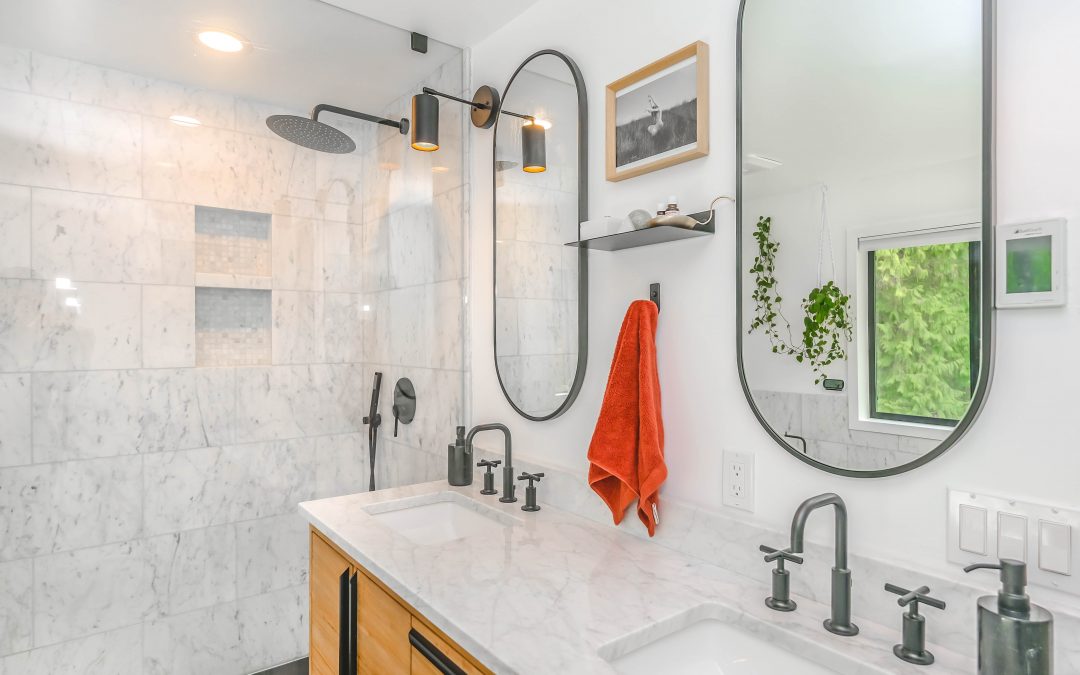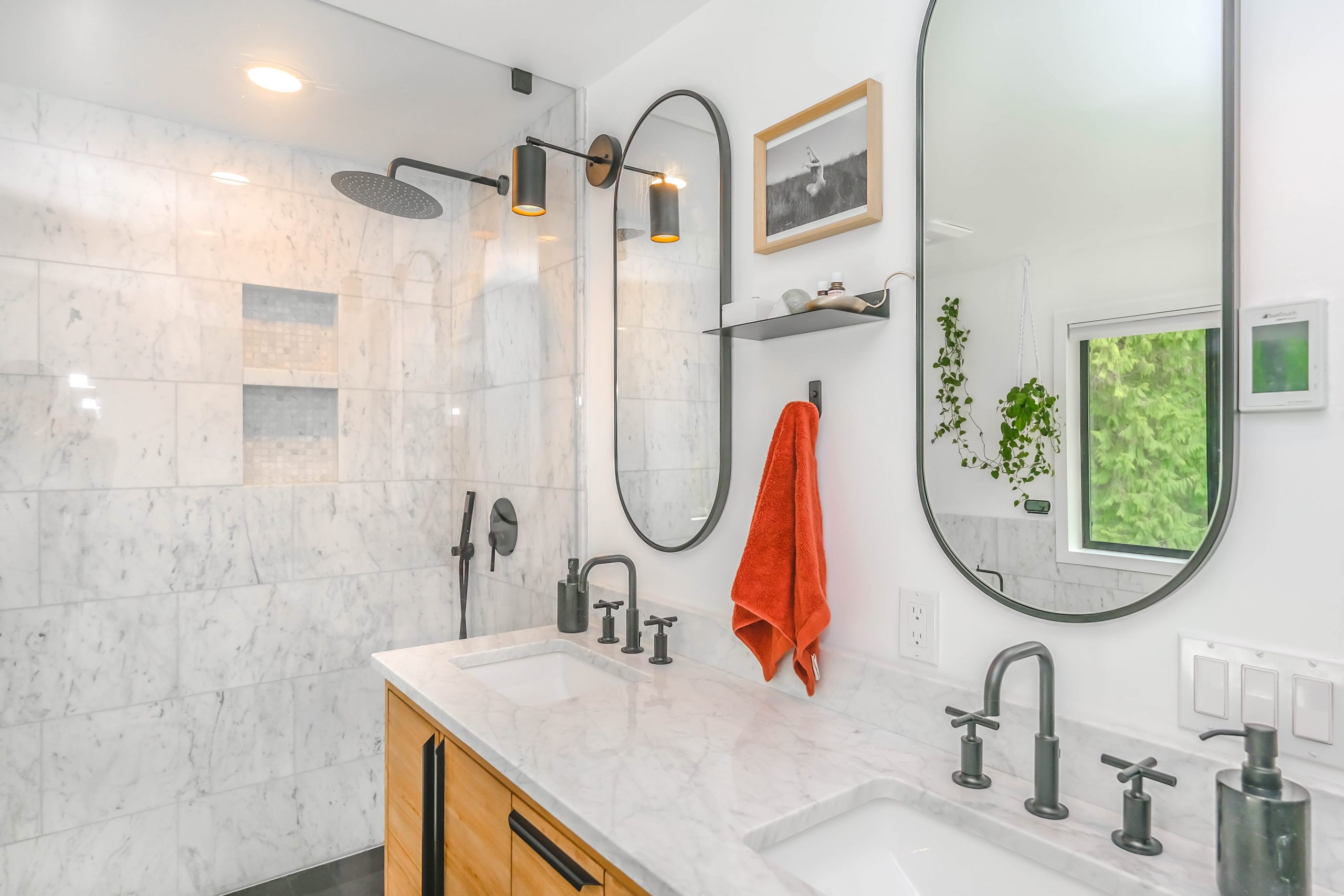Our bathrooms experience a lot of heat and moisture. While it is natural that this would occur in a room where hot water is constantly used, it is equally important that the room dries and cools as quickly as possible. Extended exposure to moisture causes serious damage to wood and paint, and allows mold and mildew to grow. Do your best to dehumidify your bathroom after each shower to protect the room and prevent expensive repairs.
- Run the fan during and after showers. Nearly all bathrooms are built with an exhaust fan to help remove moisture and heat from the room. Remember to turn yours on before you hop in the shower so it works continuously instead of playing catch-up if you were to turn it on afterward.
- Leave the door open (or at least cracked). If you find that your exhaust fan doesn’t do enough to combat the humidity from your shower, consider leaving the door open a bit. This will allow the air to escape and significantly decrease the humidity of the room.
- Open up the windows. Windows are a great way to remove excess moisture. If you love how warm the bathroom gets during a shower, you may not want to crack the door and let cool air in; instead, open a window so that moisture can leave the room, but there’s still a warm breeze.
- Warm up the bathroom first. The reason moisture builds up during a bath or shower is because the hot water heats up the air, which then cools when it comes into contact with a cool surface such as the walls and mirror. If you heat up the bathroom before your shower using a small space heater or by opening a window 20-30 minutes before you hop in, you’ll find that much less condensation forms on the flat surfaces.
- Wipe down surfaces after each shower. Water sitting on painted walls or wood floors will cause damage over time. Paint will begin to peel, mildew can grow in cracks and divots, and wood can warp. These can be expensive repairs if not prevented. To help decrease the chances of this happening, use paper towels or fabric to quickly wipe down the surfaces after each shower. This will remove most of the moisture and decrease the amount of time it takes for the surfaces to dry fully afterward.
- Dry your towels elsewhere. Wet towels hanging in a bathroom will increase the room’s humidity as the water evaporates off them. They also tend to become mildewy, because the moisture is trapped in the room and thus has a more difficult time evaporating. Instead, dry your towels and other wet items on an outdoor clothesline, or just throw them immediately into the dryer.
- Lower the heat of your showers. If you shower at a cooler temperature, it will not produce as much condensation as a hot shower and it’ll be much easier to remove the moisture that does build up.
- Decrease the amount of time you shower. Every minute you’re showering, more steam and condensation is being produced. Shortening your shower time is an effective way to cut back on the room’s humidity.
- Get a dehumidifier. If you’ve tried your best and still cannot combat the moisture that develops in your bathroom, consider getting a small dehumidifier. It will help maintain a stable humidity in the room without you needing to worry about it.
West Coast Design Build Florida designs and installs some of Sarasota’s most beautiful bathrooms. If it is time for you to renovate or remodel your bathroom, call today for a consultation.



Recent Comments